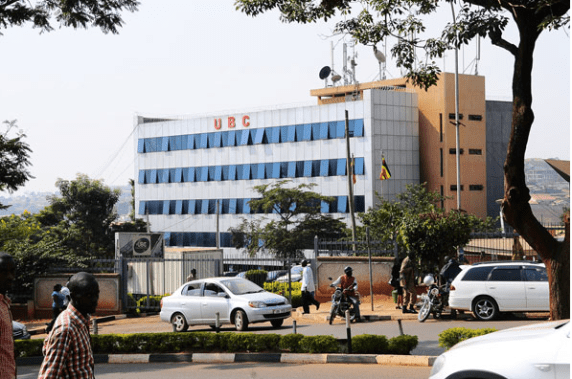Barring a recent slowdown, Uganda has achieved robust economic growth over the past decade; with positive per capita GDP and a higher average growth rate than that for sub-Saharan Africa (Figure 1).
Whilst, this positive economic performance is mostly attributed to domestic factors such as sound macroeconomic policies and strengthened institutions, Uganda’s growth trajectory has also been strongly supported by increased economic engagement with China (for example, China’s insatiable demand for raw materials which created a global commodity boom, served not only to improve the country’s terms of trade, but also led to higher export volumes – as will be further discussed).
Still, Uganda’s deepening economic ties with China have not come without controversy; with criticism abounding on the exploitative nature of China’s relationship with Africa and recent protests in Kampala on issues ranging from poor working conditions to competition from Chinese entrepreneurs. This brief, based on recently published research, addresses some of the issues associated with China’s growing economic engagement in Uganda and objectively analyses the Sino-Africa relationship, by collating evidence on China’s trade, investment and migration links to the continent; with a view to examine how countries like Uganda can harness these links.
In recent years, and especially in the period after 2000, China’s economic growth proved to be extremely resource-intensive; mainly attributed to the fact that growth was driven by exports and investments.
By 2010-2011 China’s investment rate had peaked at nearly 50%, while the economy was growing rapidly (approximately 10% per year). By comparison, Japan, Taiwan, and South Korea (all of which, like China, were able to grow at 10% per year during their rapid growth stages) recorded investment rates of only 35%.
China’s model of growth thus generated huge demand for energy and other natural resources (e.g. petroleum, iron, copper, and other metals) and resulted in upward pressure on global commodity prices.
Uganda, similar to most sub-Saharan economies that are primarily commodity exporters, gained significantly from this windfall, which saw the percentage of raw material exports to China jump drastically from 17% in 2007 to well over 50% by 2015.
However, since 2014, there has been a marked slowdown in China’s growth as well as a significant change in its growth pattern, with the composition of its GDP shifting from investment towards consumption.
According to (Dollar, David, 2016) two key factors explain these recent changes: first, global aggregate demand has slackened and as such exports have become a lagging sector for China.
Moreover, China is already the largest exporter in the world, and it is thus unrealistic to expect its exports to grow at a faster rate than world trade. The second major factor contributing to the shift in China’s growth pattern is that after years of relatively high investment rates, the economy now faces excess capacity in key sectors such as: real estate, manufacturing and infrastructure, which has in turn driven down the rate of return on further investment and led to China’s emergence as a net exporter of capital.
For countries like Uganda, this changing pattern of growth implies a shift in the economic relationship with China away from a dependency on natural resources and raw materials.
An Aging China and Uganda’s Youth
A further feature of the Uganda-China relationship is that the demographics of the two are currently trending in completely opposite directions.
In the early 2000s, as the Africa-China economic relationship took off, much of it was premised on the fact that China was a resource- poor, labour-abundant economy, with a comparative advantage in manufactures.
Most of Africa, on the other hand, was resource-rich and relatively underpopulated.
It was thus logical for China to export manufactures to countries like Uganda, in return for raw materials. However, this dynamic is now shifting. The working-age population in China has peaked (only 20% of its population is younger than 20 years of age). The largest cohort of its population lies between the ages of 25 and 54, reflecting a decline in fertility attributed to better education, improved access to birth control, urbanisation and China’s one-child policy. However, prior to this decline, China experienced a rapid population surge in the 1960s and 1970s with the resultant effect that its working age population doubled between 1980 and 2015, from 475 million to 927 million. This growth in China’s labour force was a key factor for its emergence as a manufacturing powerhouse, as it provided a seemingly
This is no longer the trend, as the resulting decline in fertility has meant a tightening of the labour market and an increase in wages.
Uganda’s demographics are moving in the alternate direction. With the fifth highest fertility rate in the world, over half of Uganda’s population is below the age of 20 and as such its population distribution follows a pyramid shape; in stark contrast to China’s which takes the shape of a pagoda.
This trend is reflected in most other African countries and by 2050, it is estimated that Africa’s working-age population will be growing at 30 million per year, making it the largest contributor to global labour force supply.
If not harnessed, this labour force growth presents a significant challenge that may perpetuate unemployment, poverty and insecurity.
Economic Implications
From an economic stand point, the shifting patterns in China’s growth and demographics present several opportunities for Uganda and other African countries. On the one hand, a shrinking labour force and its associated rise in wages is leading to a migration of manufacturing value chains from China to lower wage locations. For countries like Uganda, which face a population boom and are under-industrialised, this trend creates a significant opportunity to create employment by attracting labour-intensive manufacturing shifting from China.
It should be emphasised, however, that for Uganda to leverage the shifting growth dynamics in China (such as a shrinking labour force, rising wages and an appreciated Renminbi), it must create a conducive investment climate.
Low wages and a competitive exchange rate alone will not make much difference without reliable power and transport links, or in the face of suffocating bureaucracy and corruption.
On this point, Ethiopia’s experience is exemplary: by making a concerted push to attract labour- intensive manufacturing from China, Ethiopia has attracted 15 major Chinese investment projects in sectors such as textiles and electronics.
These investments, attracted by low wages, improving infrastructure, and Ethiopia’s duty-free access to the U.S. market through the African Growth and Opportunity Act (AGOA) have already had a remarkable significant economic impact, with the industrial sector in Ethiopia accounting for 14% of GDP compared to around only 8% of GDP for Uganda.
With the migration of labour-intensive manufacturing shifting from China and an improvement in investment climate, Uganda also stands to expand its involvement in global trade, including Global Value Chains (GVCs). Historically, countries like Uganda have played a relatively minor role in GVCs.
Worth also noting is that the resource-boom, which was fueled by China’s demand for raw materials and inputs, has tapered off and it is likely that the resulting slump in commodity prices and commodity volumes is not just a transitory shock but a more permanent one.
If this is the case, it is imperative that commodity-based exporters like Uganda do more to deepen their involvement in GVCs and develop higher-value-added activities in manufacturing and services.
Apart from trade and investment, another key facet of China’s engagement in Uganda, has been infrastructure finance, owing to the fact that a key binding constraint to Uganda’s economic growth and integration with the global economy has been its deficient infrastructure.
For Uganda, this deficiency in infrastructure spans roads, ports, energy, water and sanitation. In fact, according to a recent IGC Growth Brief6, only 17% of Uganda’s national roads are paved, only 25% of the country’s railway network is operational, and its quality of trade and transport-related infrastructure – as measured by the World Bank’s Logistics Performance Index (LPI)- is far below the sub-Saharan African average.
Fortunately, both the Ugandan government and external donors have now prioritised the removal of this constraint to growth; as reflected by the increase in infrastructure development, as well as the surge in external financing of infrastructure projects.
It must be pointed out that while China has emerged as a significant financer of infrastructure projects in Africa, it still lags behind both private investment and the more traditional sources of funding.
Recent research actually reveals that, over the past few years, China has contributed about only one-sixth of the US$30 billion Africa receives annually as external finance for infrastructure.
Moreover, most of this financing to the transport and energy sector takes the form of state-to-state, non-concessional deals and comes from the Export-Import Bank of China (China Exim Bank). Examples of the major state-to-state deals signed with China Exim Bank in Uganda include: US$1.4 billion and US$483 million for Karuma and Isimba hydropower dams as well as US$350 million for the construction of the Kampala- Entebbe express highway.
These infrastructure projects, funded by China Exim Bank, present a mixed blessing for countries like Uganda (Dollar, David, 2016).
On the one hand, they facilitate the low-cost production of large-scale infrastructure projects, without the relatively lengthy and bureaucratic processes that traditional multilateral development banks would normally require.
However, they tend to take the form of “tied contracts” with provisions that offer a clear advantage to the funding country, such as preference to Chinese construction firms (often selected through a non-competitive bidding process, in stark contrast to projects financed by multilateral banks like the World Bank).
Given China’s growing niche in the external financing of transport and energy projects, this has enabled Chinese construction companies to gain a firm foothold in Africa’s construction industry, at the expense of local companies.
Apart from the availability of cheap financing, China’s growing footprint in Africa’s construction sector has been further aided by the fact that China (given its large population and excess capacity) is able to bring in a significant number of migrant workers as contractors on Chinese-funded projects.
Typically, it is not possible, nor feasible, for other international firms to bring in large numbers of foreign workers, especially where local firms have sufficient workforce and capacity for these projects.
For countries like Uganda, the Chinese migrant workers bring missing skills, cheap and efficient construction of infrastructure, and useful links to the world’s second-largest economy.
At the same time, and as previously noted above, Uganda faces a rapidly growing population that will require the creation of nearly 1 million jobs per year.
It would thus be mutually beneficial if policymakers created incentives for Chinese firms operating in Africa to employ and upgrade the skills of the local labour force. The transfer of skills will prove even more important once these projects are completed and the operation and maintenance is handed over to local authorities or firms.
The other tradeoff being faced by policymakers when it comes to external financing from China is the sensitive issue of environmental and social safeguards. Prior to China’s emergence as a key financer of infrastructure projects in Africa, most governments were required to strictly apply the lengthy and comprehensive policies developed by multilateral development banks like the World Bank, which in some cases even overrode domestic laws and regulations and created a deterrent for developing countries looking to address their infrastructure deficits as quickly as possible.
China, on the other hand, followed a different approach in the implementation of environmental and social safeguards: relying instead on existing rules and regulations of the country in which it was investing. Initially, this attracted borrower countries in developing regions like Africa, who placed a high premium on the speed of loan approval.
However, recent experience has shown that this approach carries significant risks, especially in developing countries where the enforcement of such environmental and social safety rules and regulations is poor.
In Uganda, for example, the World Bank in 2016 halted funding for key roadworks owing to allegations from a local non-governmental organisation (NGO) on the breach of these safeguards by a Chinese contractor hired to construct the Kamwenge-Fort Portal road.
The final tradeoff associated with China’s external financing of infrastructure projects, is rising debt vulnerability especially for countries with low domestic savings and without good institutional or policy frameworks in place (this is because producing growth dividends from project investments depends as much on institutions and policies, as it does on finance).
For Uganda, which has so far committed up to US$ 2.3 billion in contracts with China Exim bank and is soon to take on more debt for projects like the Standard Gauge Railway, debt sustainability is a growing issue of concern; underscored by the fact that the country faces a low tax-to-GDP ratio relative to its regional peers and significant public investment challenges. Uganda’s debt as a percentage of revenues has risen by 54% since 2012 and is expected to exceed 250% by 2018, raising calls for caution and improved public investment management from various policy circles including the IMF, World Bank and Moody’s, which downgraded Uganda’s long-term bond rating in 2016 citing deteriorating debt affordability.
To guard against a resurgence of unsustainable debt levels (as was experienced with traditional donors in the 1970s and 1980s), the Government of Uganda must ensure a careful sequencing of its debt obligations to China as well as guarantee that the current infrastructure projects yield both growth and revenue dividends.
These risks and tradeoffs notwithstanding, China’s increased engagement with Uganda is mutually beneficial and presents several opportunities for growth and development.
Authors: David Dollar, Akura Mugyenyi, and Nicole Ntungire
Details on the following link: http://bit.ly/2uXn3iC





